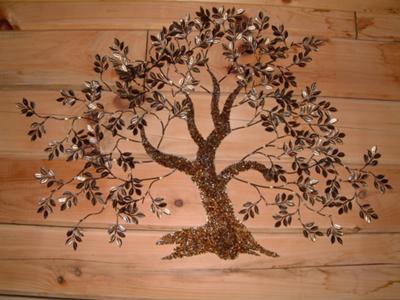|
Case-hardening,for higher wear resistance.SOLUTIONS with Effective, Powerful Advice
Case-hardening is a collection of processes used to increase surface hardness. Local, skin deep for a limited depth, hardness higher than that found or achievable in the material bulk, can play wonders on metal parts. Higher hardness is generally associated with improved wear resistance and possibly with increased fatigue resistance if residual compressive stresses are present on the surface. Usually the process is referred to steel. Low carbon or mild steel cannot be hardened by heat treatment, except by changing the surface carbon content.
The chemical composition of the surface and near surface layers is modified by introducing there Carbon or other elements by a suitable Thermally activated diffusion process. After diffusion of the added elements, the material of surface modified composition is now responsive to regular heat treatment. Carburizing is the process of adding Carbon. This can be done either by immersing the parts in a volume of solid powders, usually of proprietary composition, in a furnace at high temperature, or in a gaseous atmosphere furnace. Carburizing management is achieved by controlling carbon potential (by checking gas composition and dew point). Also by monitoring the exposure time at temperature to diffuse carbon to the required depth. Recently a partial vacuum process was developed providing shorter time and other economic advantages. An Article on Development in Steels for Hi-Temp. Carburizing was published (7) in Issue 134 of Practical Welding Letter for October 2014. An Article on Measuring Depth of Decarburization was published (3) in Issue 139 of Practical Welding Letter for March 2015. An Article on HTPro - June 2015 was published (11) in Issue 143 of Practical Welding Letter for July 2015. An Article on Computer Modeling for Induction Hardening was published (3) in Issue 161 of Practical Welding Letter for January 2017. You can get at no cost every issue of Practical Welding Letter as it is published. Please subscribe. Carbonitriding is a Case hardening process of steel parts dipped in a molten salt bath or in a specially prepared atmosphere (this last process being called sometimes nitro carburizing).
Visit the NEW Page on Welding Problems,
If you did not yet find what you need, why not typing your question in the following Search Box?
Gas Nitriding is performed in a gas atmosphere of dissociated anhydrous Ammonia on steels including elements like Aluminum or Molybdenum, Chromium and Vanadium that readily form nitrides. This process follows regular complete hardening and tempering and is performed at relatively low temperature. It is not followed by any other heat treatments. It has therefore special advantages, in that it introduces less deformation. Medium or high Carbon steel is usually supplied in normalized condition that permits machining. With suitable surface carbon content, Case-hardening can be applied by heating only the required surfaces either by flame or by induction and by immediate quenching, followed by tempering as required. Here the composition is not modified, only the surface microstructure is transformed to tempered martensite that exhibits high hardness. What has Case-hardening to do with welding? Not much, in principle. It may be useful though to know how to integrate, if necessary, Case-hardening in a welded item. It is however very important to know if Case-hardening was performed in the implement one may wish to weld, because in that case welding may become difficult if not impossible. It is not advisable to weld Case hardened material. The hardened layers should be removed by grinding or by other methods. The thickness to remove should be at least twice the thickness of the case. After repair welding, it may be necessary to repeat Case-hardening, depending on the application, especially if the implement has surfaces subject to wear. Possibly a different process like Hardfacing or Thermal Spraying could be easier to use for the same purpose. If you weld on hardened surfaces you risk getting cracks. In fact it would be the first thing to investigate in case of weld failure. How can you know if there is Case-hardening on the part? In case of doubt start testing with a file: if you cannot indent the surface, it is probably hard. Of course it would be better to test the hardness by more sensitive methods, i.e. by micro indentation, but the conclusion is the same. Even if cracking is avoided, the original hardness is reduced or compromised after welding. Case-hardening includes much theory and a lot of experience to be applied successfully. For a welder it is enough to know that it is not compatible with welding. If both processes should be present together in a given item, a proper solution should be proposed by expert people knowledgeable in both disciplines.
Artistic Steel Creation Any questions or comments or feedback? Write them down and send them to us by e-mail. Click on the Contact Us button in the NavBar at top left of every page.
To reach a Guide to the collection of the most important Articles from Past Issues of Practical Welding Letter, click on Welding Topics.
Surface Engineering
A CITY OF DREAMS FOR JILL

POWERED BY: Click on this Logo NOW! Watch - The Video: and also
Copyright (©) 2007, 2008, 2009, 2010, 2011, 2012, 2013, 2014, 2015, 2016, 2017
|




